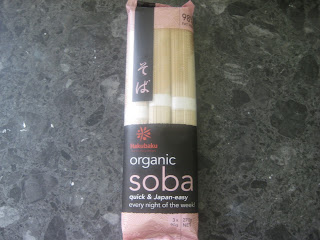For German week, I wanted to make a Black Forest cake, known in German as a schwarzwalderkirschtorte (dare you to say that five times without getting tongue tied), which was made famous by a German confectioner in 1915. Josef Keller developed this packed-with-all-the-good-stuff dessert: a multi-layered chocolate sponge filled with whipped cream kissed with kirsch (cherry brandy), cherries and chocolate shavings. Um, yum.
I wish.
Apparently inspiration for Josef's cake came from the clothes worn by women in the Black Forest region in Germany: a black dress, represented by the chocolate; a white shirt, the cream; and a hat with red pompoms, the cherries.
What I cooked, however, was a crazy twist on the traditional. This black forest dessert from Lemonpi is not made in a cake tin, it's made in a frying pan. Yep, a frying pan. It's called the Black Forest Skillet Cookie. It didn't feature cream, kirsch or a multitude of layers, but it did possess massive amounts of intensely rich and satisfying flavour. It was simple to put together - just fold flour, a bit of baking powder, and a teensy showering of sea salt through a mixture of beaten sugar, eggs and melted chocolate with butter. Then, just when you thought there was enough chocolate, stir in some milk chocolate and dark chocolate chips for good measure, and some dried cherries. Spoon into a skillet and bake as you would a cake.
It didn't take that long to cook - about 40 minutes was all it needed. I had to look out for a top that was set and an edge that was darkened. As I've mentioned many times on this journey, my oven is a little temperamental, so I wasn't completely sure it was done, but I pulled it out anyway after about 45 minutes a) for fear of burning it and b) to make the dinner date we had at Kenso Peking.
A few hours later, no amount of noodles, peking duck pancakes, drunken chicken and fried fish with ginger and shallots could stop me from devouring this Black Forest in a Frying Pan. Best described as a smiling assassin, seducing me with its brownie-like looks and attempting to kill me with its sinful amount of sweetness.
As I inserted the knife to make the necessary incisions, it glided through with ease. Uh oh - undercooked? No even slices emerged. While I was disappointed at serving a sloppy, muddy mound onto my pretty floral plates, the taste was actually pretty good. Everyone agreed. (Family support is unwavering and extremely generous.) Very gooey, but upon reflection I don't think it was supposed to come out cake like anyway. It just wasn't the most attractive-looking dessert.
The triple chocolatiness was magically decadent. The cherry popped up every now and then to say a juicy hello, and the flaky, cakey top danced cheek-to-cheek with the slightly sticky centre in what was quite pleasing really. Overnight in the fridge, then a few hours out if it and you'll get a nice firmer texture that I think tastes a little better.
I'd love to make a classic Black Forest cake though, so if anyone has a good recipe for it, please let me know.

















